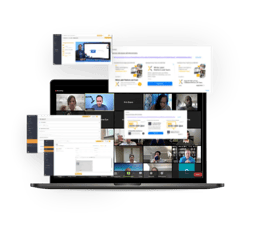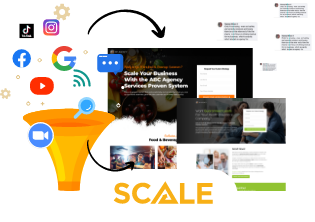Google Disclosure Notice
Introduction to online advertising and AdWords
AdWords is Google’s advertising product, which displays your ads to people looking for products or services similar to those that you offer on Google or its partner sites. Advertising with AdWords allows you to reach new customers at the precise moment they’re searching for your type of products and services. You can choose to be charged for clicks, impressions, or conversions, depending on the type of campaign you run.
Once your ads are running, we provide performance data so your third-party partner can track what’s working and what’s not. AdWords is highly accountable, helping you understand precisely the return on your advertising investment and allowing your third-party partner to make adjustments to optimize for the best possible return.
In addition to Google search, you can also run ads on Google’s network of partner sites (places where you may have seen the “Ads by Google” message) – including YouTube. On this network, you can take advantage of other ad formats, such as image ads and video ads.
Google and third-party partners
We believe that AdWords can help your business succeed. However, you might not have the time or resources to devote to building – and regularly maintaining – a successful AdWords account. Or maybe you’d just like some help from an expert.
That’s where our third-party partners come in. There are many different types of third parties out there, from the largest advertising agency and yellow page publisher to the one-person web consultant. To help you select a third-party partner, we’ve developed our Partner Programs. Third parties participating in these programs will display a badge on their website and have taken and passed certification exams. Two badges that you’ll probably see most often are AdWords Certified Partner and Premier SMB Partners. See the badges and learn about our Partner Programs at www.google.com/adwords/partnerprograms.
To confirm that a company is certified within our Partner Programs, click the badge on their website. If they’re certified, you’ll be taken to the company’s profile page on Google.com.
How to work with a third-party partner
An AdWords third-party partner can save you and your business a lot of time and energy. For best results, we encourage you to stay informed, involved, and up-to-speed on your ad campaigns, and let your partner handle the time-consuming work.
Third-party partners will often charge a fee in addition to the cost of your advertising. Remember, they’re providing a valuable service by managing your AdWords campaigns, providing you with reporting, answering your questions, and optimizing your campaigns, among many other things. We believe it’s important for you to understand the total cost of your AdWords advertising, including any fees your third-party partner charges. Use this amount to determine your return on investment (ROI).
Here are five quick tips for being a savvy customer:
1. Be selective When selecting a third-party partner to work with, look for companies that display a Certified Partner or a Premier SMB Partners badge. You can use Google Partner Search to verify that a company is certified, or to search for certified partners. As part of your selection process, be sure that you understand and are comfortable with the length of the contract you’re entering into with the partner. There are a few other criteria to help you choose the right third-party partner for you:
- Has this third-party partner worked with businesses in your area before?
- What about businesses with similar budgets or target audiences?
- What other services can they provide – alongside AdWords – to grow your business?
2. Pick one partner You may be tempted to divide your budget among multiple third parties to see which one drives the best results. You’re welcome to do this as long as you test them one at a time. Google doesn’t display more than one ad for a business on a page of search results, so you’ll find it difficult to test multiple third parties at once.
3. Educate yourself Understanding AdWords at an advanced level can take time, but it doesn’t take much time to learn the basics. Review the “AdWords basics” section below or visit the AdWords Help Center at adwords.google.com/support/aw to learn more. Understanding AdWords will help you make more informed decisions with your third-party partner.
4. Trust experience If you’re working with a company that’s managed hundreds of AdWords accounts, then it’s likely that they’ve developed expertise with AdWords. If they tell you that certain industries have historically higher online-advertising costs or certain keywords might not work for your business, they’re probably speaking from experience.
5. Evaluate your performance Unless you’re focused on branding, what matters most about AdWords is the return on your advertising investment (i.e. the number of new customers coming in the door). So take some time each month to measure what you’re investing, and the results you’re receiving from that investment.
What to watch out for
We believe that it’s important for you to have a great experience with AdWords. If this isn’t the case, please let us know. Be sure to first work with your third-party partner to try to resolve any issues before contacting us.
Many third parties have earned our trust by representing the best interests of their advertisers. There are some third parties that are not acting in this way. Here are some activities to watch out for and let us know about:
- Not sharing the cost and performance of AdWords campaigns: You have a right to know, at a minimum, the number of clicks, impressions, and cost of your AdWords advertising.
- Guaranteeing ad placement, either on a specific advertising channel or in a specific position: It’s not possible to guarantee a specific ad position on Google.com search results pages. AdWords ad position is determined by an auction and changes dynamically with every new search. Some third parties may only charge you if they achieve your desired ad placement, but those that guarantee a specific position (i.e. the top position every time a user searches for your keyword) are misrepresenting how AdWords works.
- Claiming to be from Google: Ask this person for their name and to email you from their Google.com email address; if you’re still unsure, forward the email to the address above.
- Harassing or bullying you into signing up: Only you can remove your business from the natural or organic search results on Google.com.
- Deceptive pricing: The agency may not use the correct advertising budget as agreed with you — make sure that you get an official copy of your agreement in writing.
- Claiming AdWords will affect your organic or natural ranking: AdWords advertising has no impact on your organic or natural ranking in the search results; the two are completely separate.
AdWords basics
- Keywords: The words or phrases you select – when users search for those words on Google, your ad may appear next to or above the search results.
- Clicks: The number of times users clicked your ad. Impressions: The number of times your ad appeared.
- Clickthrough Rate (CTR): The number of clicks divided by the number of impressions, shown as a percentage. A good CTR can improve your average position.
- Average Position: The average position that an ad appears in when it’s triggered. An average position of 1-8 generally means that the ad is appearing on the first page of search results.
- Cost: The total amount you spend with AdWords.
- Conversion: The action that your advertising results in, such as a phone call, lead, or sale. This is usually a good metric to use to measure the success of your advertising.
Disclaimer: While we may not respond personally to your email, we will investigate your comments and, if necessary, take the appropriate action. If you have a question about your AdWords account and need help, please visit the Help Center at http://adwords.google.com/support/aw/.

White Label Success
Unlock new revenue streams with our white label marketing services. Comprehensive support from lead generation to sales fulfillment.
AI Lead Generation
Find qualified leads, get enriched contact details including verified emails, and start reaching out via emails, calls, text and social media in minutes!

SCALE Program
Confidently add an extra $30K - $50K/month in recurring revenue with our support in lead generation, sales and strategic coaching.
"Clickx is the company I wish I had when I started over 15 years ago."
-Solomon Thimothy

Wanna See Clickx in Action?
See how we make agency scaling easy!
Watch a Walkthrough of Clickx!

Lorem ipsum dolor sit amet, consetetur sadipscing.
Lorem ipsum dolor sit amet, consetetur sadipscing.


Lorem ipsum dolor sit amet, consetetur sadipscing.
Ready to Scale Your Agency
Discuss
NEXT
STEPS
Schedule a call with a Partner Advisor to learn how you can unlock the potential of your agency!

What does automation mean for designers?
It’s hard to work on a product team that hasn’t automated some part of their workflow in the name of productivity. If machines can take care of the repeatable tasks and heavy lifting, designers can focus on doing more meaningful work. But how does this affect the way we use the work being created by machines?
Josh Clark, founder of design studio Big Medium, provoked the audience with this very question during his talk, ‘A.I. is your New Design Material’. Some of the most impressive advancements in recent technology are things like facial recognition, predictive text, and image search, all powered by machine learning. But it’s important to remember – all of these technologies are still built on code. The upside is less room for error. No real emotions, expectations, or feelings get in the way of the job it was designed to do.
Yet, as humans, we assume that when facial recognition fails, the whole process is inherently flawed. But was it really?
The point of introducing machine learning into our products was never to have them do all the work. Instead, algorithms and logic-based solutions ought only provide humans with better insight so as to empower us to arrive at better solutions, faster.
This fundamental understanding our users that really helps us make better products. This might be a simple example, but if a computer can figure out how to walk on it’s own, maybe it’s time to start investigating why and how these solutions were formed.
How do we design for the unknown future?
Jared Spool, Co-Founder of UIE asks, “What was the most important thing you learned yesterday, and how will it impact what you do in the future?”
As designers and researchers, we essentially always need to think about how we design products for the future, even as we’re meeting the demands of present day design. A tall order, especially when things move as fast as they have been over the last decade.
To start, Jared advocates for looking back at the ways in which our design processes have already changed.
